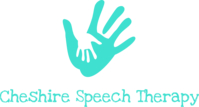The following are indicators that a school-age child might be experiencing communication difficulties:
- Have immature social skills
- Behave or sound like a younger child
- Find following instructions independently difficult, tending to copy other children
- Do the wrong thing
- Struggle to listen well
- Miss what’s said to them
- Know and use fewer words
- Talk in shorter sentences
- Have difficulty pronouncing a range of sounds
Impact of Speech Language & Communication Needs (SLCN )
from ICAN The cost to the nation of Children’s Poor communication
http://licensing.ican.org.uk/sites/licensing.ican.org.uk/files/Evidence/2_The_Cost_to_the_Nation_of_Childrens_Poor_Communication.pdf)
Based on information on prevalence studies and from schools census data, we estimate that around 10% of all children have long term, persistent Speech, Language and Communication need (SLCN), especially if their core difficulty is understanding language. This means 2 to 3 students in every classroom are struggling to communicate and those children and young people with undetected SLCN may be at greater risk of exclusion from school.
Impact on learning and attainment
- As pupils become literate, language and literacy support each other. Without underlying language skills, pupils cannot effectively access the curriculum; this impacts on their attainment. For example: 50-90% of children with persistent SLCN go on to have reading difficulties.
- In one study, at age 6 there was a gap of a few months in reading age between those with good and poor oral language skills. By 14, the gap had widened to a difference of 5 years in reading age
- Only 25% of pupils with SLCN achieve the expected level in English at the end of Key Stage 2 and 15% of pupils with SLCN achieve 5 GCSE A*-Cs
Impact on social, emotional development and behaviour
- Children with SLCN feel they are less able or popular than their peers and are more likely to be bullied
- Those with early language impairment are at a higher risk of mental health problems. There’s strong evidence that many children and young people (between 55% and 100% of pupils) who have Social, Emotional and Behavioural Difficulties (SEBD) have SLCN which have never been recognised.
- Two thirds of 7-14 year old children, with serious behaviour problems, had a language impairment
- At least 60% of young people in young offender’s institutions have communication difficulties
The benefits of Early Identification for pupils
For further advice and recommendations please go to:
http://www.thecommunicationtrust.org.uk/media/253193/1_4_early_identification_final_july_2014.pdf
Services to Education Settings
I am able to work with your setting in the following ways:
Referral – you pass my details onto parents and the service package (see below) will be provided to parents (at no cost to your setting)
Designated therapist for your setting– You can engage me on either an hours based or whole day contract. I will work closely with the Headteacher, SENCo and teachers to provide a package that meets the needs of the children, the staff and the whole school.
Training – I can provide tailored training for the whole staff or on an individual basis. Please see the training section for more details on some packages that can be offered.
Service package provided
Team working – Teachers and school staff play a vital role in the identification and remediation of SLCN. Therefore I will work closely with school staff to give appropriate activities and advice for the school environment. This can include support in writing IEP’s, attending parents evenings
Classroom observations – This can be either on a whole class basis, highlighting to teaching staff those children who may benefit from further investigation, or on an individual basis, to build a more complete picture of the child and see how they function in the classroom environment. Strategies and activities can then be tailored to fit the child’s profile of need and their style of learning
Assessments – Detailed assessment of the child, both formally and informally as required, to create a detailed profile of their strengths and needs. This may include observations of the child in the classroom and playground.
Reports – Detailed, yet concise reports are provided that profile the child’s strengths and needs. These also give a baseline against which to track the child’s progress and can be shared with all school staff and any additional professionals. Specific reports, such as for Annual Review, EHCP and transitions may also be requested.
Treatment plans – Treatment plans are created on an individual basis to meet the communication needs of the child and shared with you. I find children make the most progress when they have regular practice, therefore I also set up and demonstrate home/school activities.
All interventions are based on evidence and follow the guidelines published by the Royal College of Speech & Language Therapists (RCSLT)
Individual/group therapy – Therapy is linked to the curriculum wherever possible and can be offered on a 1:1 basis, in pairs or small groups.
Training – I am ELKLAN trained and therefore can deliver this training on an induvial basis or in a small group. I can also create bespoke training on aspects of communication that have been highlighted by yourselves. Please contact me to discuss your training requirements in more detail.
Resources – Child-specific resources to support treatment plans are provided for use in the home and school environment, which helps the child develop their skills across a range of contexts.
